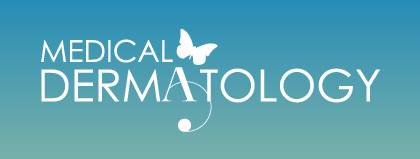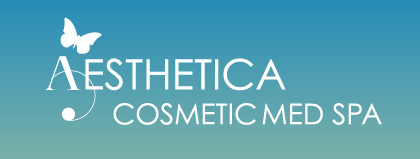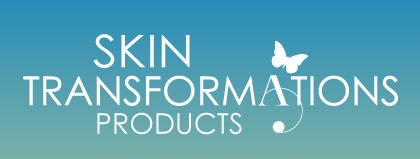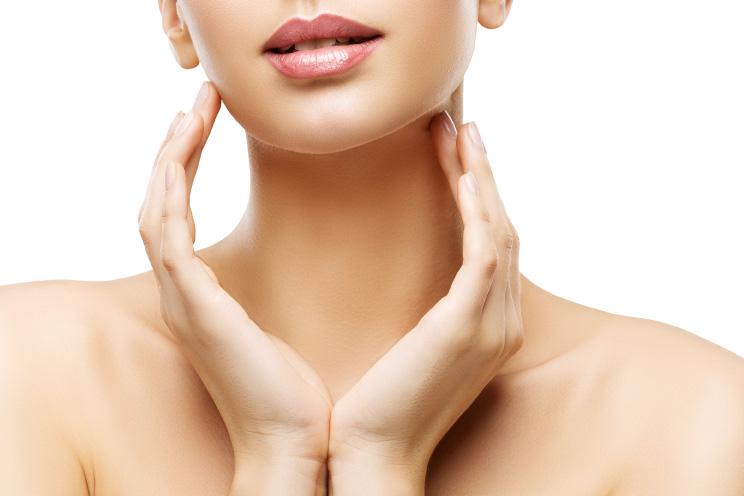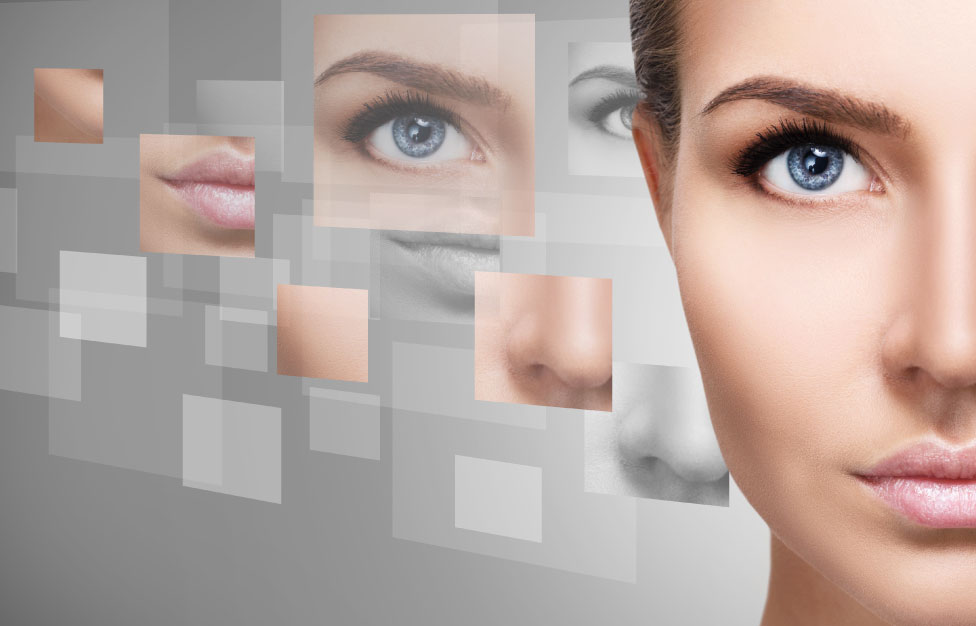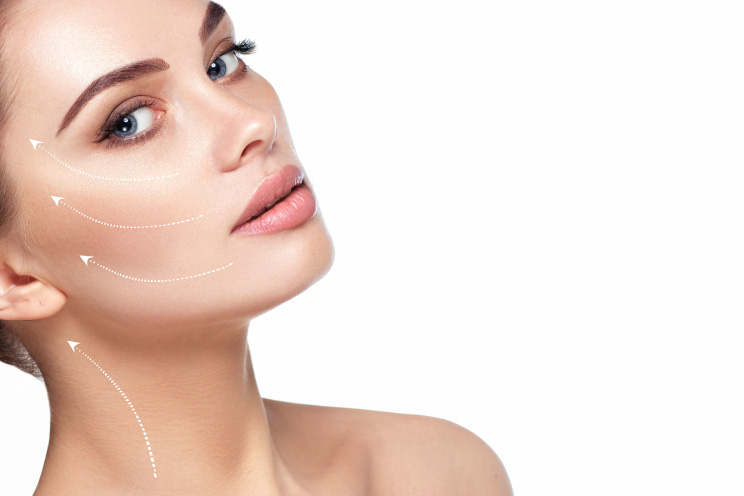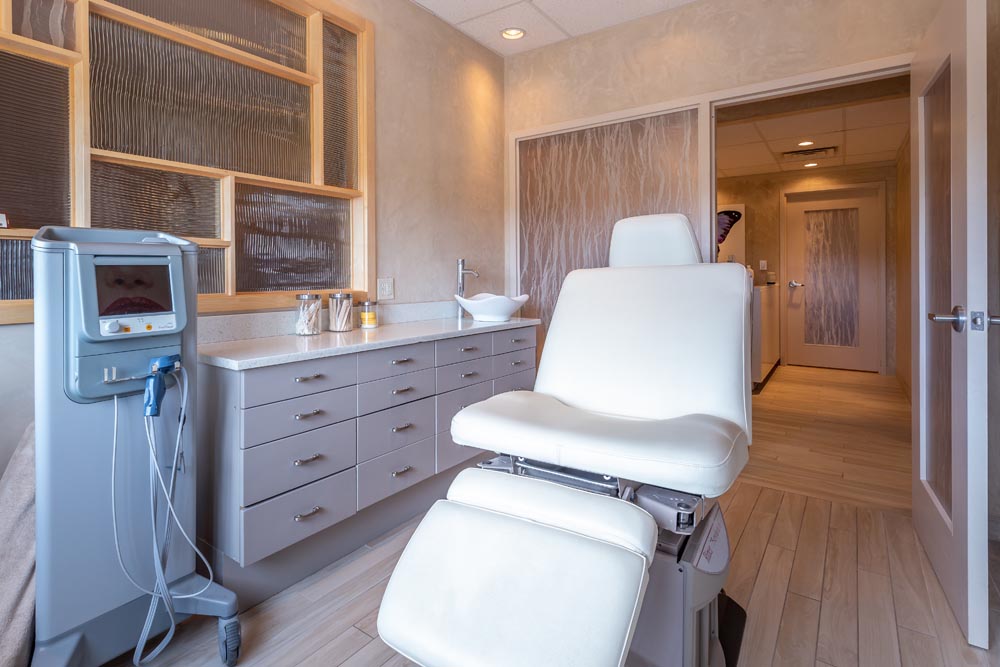Our providers specialize in the diagnosis and
treatment of disorders of the skin, hair, and nails.
With Dr. Eivins and her team, your skin is in the very best hands! Dr. Eivins is the only certified MOHS surgeon in Northwest Colorado, for the treatment of skin cancer. We have over 40 years of experience and the expertise to treat all of your skin care needs including acne, warts, eczema, rosacea, hair disorders, and psoriasis. We also treat skin infections, rashes, moles, and skin cancer. We offer full skin exams to look for abnormal moles, melanoma, other skin cancers, rashes, and also to reassure you about benign skin growths. We offer prescription medications for many skin conditions, and perform surgical procedures, including surgical excisions, cryosurgery and laser surgery.
Medical Dermatology Conditions
BASAL CELL CARCINOMA (BCC)
Basal cell carcinoma is the most common type of skin cancer. It generally looks like a pink or red shiny or scaly spot that tends to bleed and crust over but never heal. It is usually slow growing and generally does not spread to other areas of the body. However, BCC can extend below the skin to the bone and nerves, causing considerable local damage. It is usually not a life-threatening form of skin cancer.
SQUAMOUS CELL CARCINOMA (SCC)
Squamous cell carcinoma is the second most common skin cancer. It may appear as a bump or as a red scaly patch. SCC can develop into large masses and become invasive. Unlike BCC, this form of cancer can spread to other parts of the body. Therefore, it is important to get early treatment.
When found and treated properly, the cure rate for both BCC and SCC is over 95%. Depending on the type of BCC/SCC, the location, and the size, there are several treatment options available. For skin cancers of the head and neck, the most effective therapy is Mohs surgery. Dr. Eivins specializes in this type of treatment. At The Dermatology Center of Steamboat Springs, our providers are dedicated to diagnosing and treating skin cancer. We also encourage regular skin checks to carefully monitor any skin changes.
MELANOMA
The least common but most deadly form of skin cancer is melanoma skin cancer. Melanoma is the most common form of skin cancer in age 25-29 year olds and the second most common cancer in 15-25 year olds. The incidence increase with advancing age especially when combined with sun exposure. One person dies every 52 minutes from melanoma and over 78,000 cases will be diagnosed this year. On average a persons risk doubles if they have had at least one sunburn. The vast majority of skin cancers are caused from the sun, but genetic inheritance also plays a role. If you have red hair, dysplastic nevi, over fifty moles, history of sunburns, history of tanning bed exposure or family history of melanoma you must get a baseline skin exam and get checked annually. Melanoma is completely curable if caught in the early stages. At our office we examine your moles in a total skin exam. We use advanced diagnostic techniques called dermoscopy and our vast experience to diagnose Melanoma in the early stages. We can photograph your moles and compare them at subsequent visits. We teach you the ABCDEs of melanoma diagnosis so you can monitor your moles on a monthly basis.
Studies have shown that seeing a dermatologist lowers your risk of dying from Melanoma by 40 percent. Make your appointment today for your baseline skin exam.
ACNE
While mild cases of acne may respond to over-the-counter treatments containing benzoyl peroxide or salicylic acid, more severe cases may require prescription medications. At The Dermatology Center of Steamboat Springs we take all acne cases seriously. We are dedicated to treating acne and preventing acne scar formation. We may recommend a combination of topical medications and oral medications. Some patients may also benefit from chemical peels, laser treatment, or acne facials performed in our Medical Spa. At The Dermatology Center of Steamboat Springs, we take a tailored approach to treating acne. It’s important to know that acne cannot be cured overnight. It may take many weeks before it starts to respond to treatment. Be patient. We will help you find the best treatment plan. You don’t have to suffer with acne any longer! Make your appointment today to see one of our specialists.
ECZEMA
Eczema is a group of common skin conditions that affects up to one out of every ten people at some point in their lives, and tends to be especially common in infants and young children. These conditions often develop as a result of an immune system or allergic reaction, and involve irritation and inflammation of the skin on the face, neck, hands, ankles or anywhere else on the body.
There are several different types of eczema, but the most common is atopic dermatitis, which is an often chronic condition that is inherited as a result of certain allergic conditions such as asthma or hay fever. Patients with this condition usually have itchy skin and red rashes on the skin that most often occur during “flare-ups”. These symptoms can vary greatly depending on the type and severity of the condition, as well as the patient’s individual health. If you are experiencing signs of eczema, you should see a doctor in order to confirm the diagnosis and receive proper treatment to relieve symptoms.
PSORIASIS
Psoriasis is a common, chronic skin condition that involves a rapid production of skin cells that build up on the surface of the skin and form scales, patches and other unwanted symptoms. Over seven million people in the US are affected by psoriasis, including men, women, and children of all ages.
This condition develops as a result of an autoimmune disorder, in which skin cells replace themselves every three to four days, rather than every 30 days, creating a buildup of cells and causing symptoms to develop on the scalp, elbows, knees, hands, feet and genitals. While there is no cure currently available for this chronic condition, there are several treatment options available to reach the goal of clear skin.
ROSACEA
Rosacea is a common, chronic skin condition that affects over 14 million Americans, many of whom are unaware that they have the condition. Rosacea appears on the skin of the face as areas of redness and small, pus-filled bumps similar to acne, and can affect a patient’s confidence and self-esteem as a result. Although rosacea is a chronic condition that cannot be cured, there are several treatments available to relieve symptoms and prevent flare ups, allowing patients to avoid embarrassment from the appearance of their skin. The most effective treatment for rosacea depends on each patient’s individual case, but usually includes a combination of prescription treatment and life changes.
WARTS
Warts are benign tumors that commonly involve the skin and other epithelial tissues. The etiologic agents for these infections are a class of double-stranded DNA viruses called papillomaviruses. Warts are generally classified by their clinical features and morphology (e.g., common, flat, filiform) or by location (e.g., genital, plantar, respiratory papillomatosis).
Warts are a common condition that develops on different areas of the body as a result of infection by a type of human papillomavirus (HPV). There are several different types of warts, which may have a different appearance and tend to occur in different areas. In general, warts tend to appear on warm, moist parts of the body, such as the hands, feet knees and elbows.
Although they can affect anyone, warts are most common in children and young adults, as they are passed through direct contact with an infected area. Warts often appear as small skin growths that may be flat or slightly raised, and can be brown, gray, pink or skin-colored. One of our providers can diagnose warts through a simple physical exam.
SCLEROTHERAPY
Sclerotherapy is the “gold standard” treatment for varicose and spider veins. A special sclerosing agent is injected into the diseased vein, which then collapses and is gradually absorbed by the body. By the end of the treatment program, the veins are less visible on the skin surface. Sclerotherapy often needs to be repeated every 6 weeks until optimal outcome has been achieved.
MOLES
Moles are composed of a grouping of cells called melanocytes. They develop from birth up until about your fifth decade of life. Healthy moles are typically less than ¼ inch in size, exhibit uniform color and symmetry. We recommend full skin exams to examine your body for any atypical moles. If you see a mole which is asymmetrical, has an irregular border, variation in color, diameter bigger than a pencil eraser and has been evolving over time, bleeds or is itchy please come into our office for evaluation as soon as possible. Skin cancer caught early is highly curable.
PEDIATRIC DERMATOLOGY
We specialize in pediatric dermatology. Dr. Eivins and her staff are equipped to care for and treat the unique skin conditions of children and adolescents. We can diagnose a wide variety of skin disorders and perform surgical procedures with the utmost of patience and gentleness.
FULL SKIN EXAMS
We encourage everyone to get a full skin exam at least once a year by a Dermatologist. At the Dermatology Center of Steamboat Springs, we are experts in diagnosing and treating skin conditions. During your skin exam, we may need to do a biopsy on a suspicious spot. Please point out any areas of concern you may have, such as a spot that has changed shape or color. Please note that a skin exam is not covered under preventative benefits through your insurance.
ACTINIC KERATOSIS
Actinic keratoses or AKs are precancerous lesions as a result of UV radiation. They are usually red, scaly growths that do not heal on areas of the body frequently exposed to the sun such as the face, ears, scalp, neck, hands, arms and lower legs. ⅕ of these growths are thought to potentially develop into Squamous Cell Carcinoma. Therefore, having routine skin checks to treat these precancerous lesions is essential.Various forms of treatments exist such as cryotherapy, topical creams and photodynamic therapy.
HAIR LOSS (ALOPECIA)
Each day it is normal to lose 100 hairs per day. If you are experiencing more hair loss than normal it is necessary to have an evaluation by a provider to determine whether your hair loss is genetic, hormonally influenced, infectious, secondary to a nutritional deficit or from an overactive immune system. PRP (platelet rich plasma) is one treatment option we offer in our clinic to regenerate hair growth. PRP works by lengthening your hair follicle’s growing phase and has virtually no side effects.
ALLERGIC CONTACT DERMATITIS
Allergic contact dermatitis occurs when a patient’s immune system reacts to a specific allergen typically by developing a red, itchy, scaly rash. This reaction may occur after a few days of initial use or after a few years in the place of contact on the body or interestingly in other parts of the body. Once your immune system has been triggered to react to the specific allergen the rash will recur with each exposure. With patch testing we are able to determine the specific allergen you need to avoid. We place the allergens on an adhesive that applies to your back for forty eight hours. We then remove the patches after two days of contact and evaluate your reaction(s) on day five or seven. Some of the most common substances known to cause allergic contact dermatitis are: nickel, fragrances, natural rubbers (latex), dyes, cleaning products, soaps, medicines and oils from plants. It is best for us to review the products you use and/or take on a daily basis at home and at work for us to determine what are possible allergens which should be tested.
Mohs Micrographic Skin Cancer Surgery
Dermatology of Steamboat is a CLIA certified lab
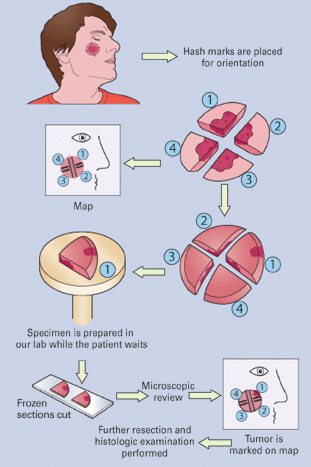
Mohs micrographic surgery is a highly specialized technique used for the treatment of skin cancers. Dr. Eivins was trained in her residency program by world famous Mohs surgeon Duane Whitaker. She has performed over 5000 cases. The procedure was developed by Dr. Frederick Mohs, a dermatologist in Wisconsin. This technique is only done by Mohs surgeons who are the surgeon and the pathologist. Dr. Eivins is a member of the American Society of Mohs surgeons. During the process, 100 percent of the margins are evaluated to ensure that the tumor is completely removed prior to the repair of the defect. Mohs micrographic surgery therefore results in the highest cure rate for complex skin cancers while minimizing the removal of normal tissue. Skin cancers like basal cell carcinoma and squamous cell carcinoma can grow like a tree root with extensions under the skin that are subclinical. If incompletely excised, the cancer will return and often comes back larger than the original tumor. Standard excision allows for delayed examination of tissue and looks at 1-2 percent of the surgical margins. Because 100 percent of the margin is evaluated, the tissue processing is a more lengthy process.
After the tumor is removed the defect is addressed. Depending on the size and location, Dr. Eivins will discuss the options for closure. Dr. Eivins does 95 percent of her closures. However, occasionally a tumor will be much larger than anticipated or invade critical areas. In this case, she may recommend a plastic surgeon to close your wound. If that is the case, the wound will be bandaged until an appointment can be made for the closure. This does not affect the clinical outcome of the scar.
Steps in detail:
- The area is prepped and a local anesthesia injection will be performed around your skin cancer.
- The nurse will bandage you and you will wait in our waiting room. You may go down to the cafeteria but need to remain on campus.
- The tissue is mapped and charted like a clock face. We freeze the tissue and make it into slides for histological interpretation. This tissue prep can take an hour to do. Once the slide is ready, Dr Eivins will look at it to see if all of the cancer is removed. 50 percent clear with one stage. If tumor is present, we repeat the whole process just in the area that is positive.
- Once the tumor is removed, Dr Eivins will address the closure.
- You will be sent home with wound care instructions. Most sutures are removed one week after surgery. We will not want you to do heavy lifting for the following week as this may cause a blood clot under the skin and affect your cosmetic outcome. We also will not want you to be in a hot tub, swimming pool, ocean or lake. Do not plan on doing this surgery and going on vacation. It is difficult to manage a patient who has left the area if complications should arise.
- Because we can not be sure how many stages it will take to remove you cancer we suggest that you not make any other appointments or plans that day. Most patients leave by early afternoon, but if your cancer is large you may be there all day. We provide snacks for patients. There is a cafeteria in the hospital.
UltraPulse®
Unparalleled Performance and Precision
When it comes to maximal precision and high-end performance, UltraPulse CO₂ laser is the ultimate solution. For decades the UltraPulse® technology is considered as the gold standard when it comes to ultra-precise laser-tissue interaction.
Active FX is the gold standard in laser resurfacing. It can dramatically improve the appearance of fine lines, wrinkles, scars, dark spots, and other irregularities on the face, neck and chest. By removing sun damage with fractional technology, it stimulates the formation of new and healthy skin and new collagen. This provides greater elasticity and supports which results in more youthful, firmer, tighter skin.
For those looking to go a little deeper, Deep FX is another option in CO2 laser resurfacing that penetrates to the lower part of the collagen layer to repair deep lines and wrinkles, acne scars and scars from surgery or trauma. Effective as a standalone treatment, Deep FX can also work in combination with Active FX (referred to as Total FX) to achieve optimal results.
If you aren’t sure which approach is right for you, simply schedule a consultation to pinpoint your specific needs. Whether you opt for Active FX, Deep FX or Total FX, each procedure is performed in the comfort of our laser suite with both oral sedation and topical anesthetics. The procedure can take anywhere from 45 to 90 minutes, and once complete; patients will experience a sensation similar to a sunburn. Post-treatment aftercare is carefully designed by our staff. The recovery process concludes with a comprehensive consultation and long-term skin care and available treatments to continue improving the health and beauty of your skin.
Skin Improvements:
- Smoother tighter facial skin and contours
- Tighter and more lifted eyelid skin
- A smoother, tighter and more wrinkle-free neck
- Softening of smokers’ lines and vertical lip lines
- Fading of skin discoloration
- Scar reduction
Laser & Light Based Therapies:
CO2 Laser, Photodynamic (Bluelight) Therapy, Photo Therapy
CO2 Laser:
Fractional or “pixilated” carbon dioxide (CO2) lasers are one of the latest advances in non-surgical skin rejuvenation treatments. The CO2 laser has the longest wavelength of all the lasers on the market and can be used safely on darker skin types with appropriate adjustments in the settings.
Fractional CO2 lasers excel at treating deeper wrinkles, more severe textural changes from sun damage, wrinkles, blotchiness, acne scars, and surgical or traumatic scars. It can be used on the delicate eyelid skin and around the mouth. It is also a very effective treatment for sun damage and precancerous growths (actinic keratoses – note that insurance will not cover this).
Photodynamic (Bluelight) Therapy:
Photodynamic therapy treats premalignant growths by using special drugs called photosensitizing agents, along with light, to kill pre-cancerous cells. The drugs only work after being activated by certain wavelengths of light. The process also is known as PDT, photoradiation therapy, phototherapy and photochemotherapy.
Phototherapy:
Phototherapy or light therapy, involves exposing the skin to ultraviolet light on a regular basis and under medical supervision. Treatments are done in a doctor’s office or psoriasis clinic or at home with phototherapy unit. The key to success with light therapy is consistency. Present in natural sunlight, ultraviolet B (UVB) is an effective treatment for psoriasis. UVB penetrates the skin and slows the growth of affected skin cells. Treatment involves exposing the skin to an artificial UVB light source for a set length of time on a regular schedule.
NB UVB:
One treatment option available to our patients with atopic dermatitis, psoriasis vulgaris, vitiligo, polymorphous light eruption and cutaneous T-cell lymphoma is our Narrowband UVB light booth. This booth emits a wavelength of UV between 311-312 nm. This is a safe treatment option for those who have dermatitis covering majority of their body as well as children and women who are pregnant and/or breastfeeding. The treatment regimen varies based on diagnosis and may be one to three sessions a week.

